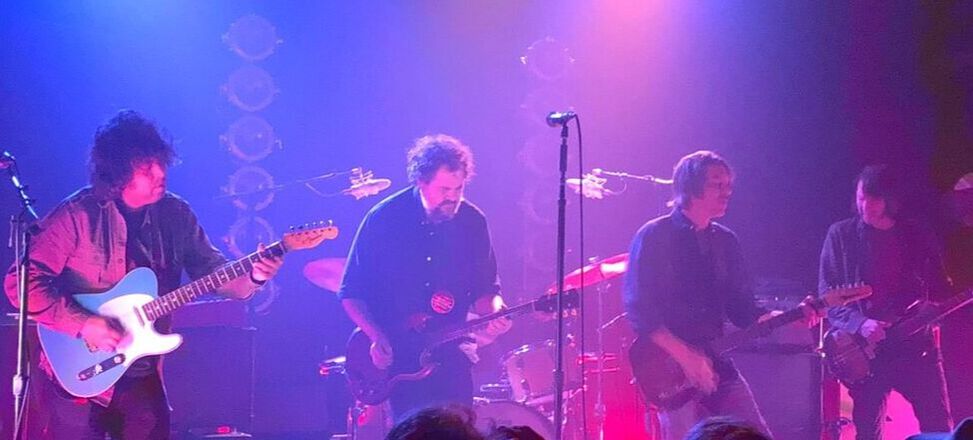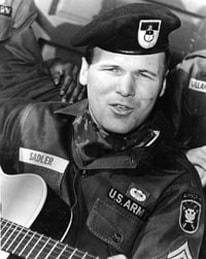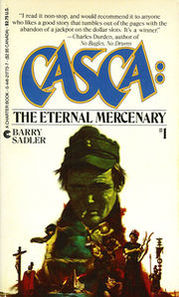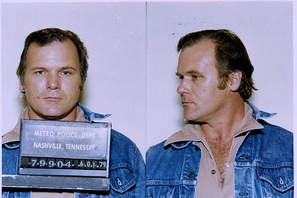|
by Alea Jeremiah
Who says you can't put on an outstanding performance at 84? Frankie Valli has lived a full, incredible life and isn't planning on stopping anytime soon. I had the pleasure of experiencing the legend himself in concert on Friday, Nov. 9 at Verizon Arena in Little Rock, Ark. Honestly, this was a concert I never thought I'd have the honor of attending, I'm a huge fan so it was pretty surreal. At Verizon, they put the stage at about the halfway mark of the floor. There was some floor seating, the lower bowl, and the middle bowl open and it was pretty full. Although, I'd like to note that me being 21, I was pretty much the youngest one in attendance, aside from a few young kids who were definitely dragged along with their parents. Before Valli came out, they showed a video on the screen which was a huge montage of highlights from his career and life. This was a tad bit emotional, I’m not going to lie, and then he came out and the show really began. The difference between the crowd of this concert and another concert I might see myself at was that nobody stood the entire time except to applaud for a few songs. Everyone was in their seats the entire time which made it hard for someone like me who likes to stand up and dance. As for the concert itself, it was amazing. Again, he's 84 and if you can believe it, during his performance of “Sherry,” he hit those notes exactly how he did when it was recorded all the way back in 1962. He is incredibly talented. He was also accompanied by four younger gentlemen, The Four Seasons, who were incredible, as well. Those guys really helped bring Frankie's past alive. It was like I was watching the original group. The musicians he had were equally as incredible, and as a plus, his two trumpet players were local musicians. How awesome it must have been for those guys to get that phone call! Valli sang everyone's favorites including the aforementioned “Sherry,” “Who Loves You,” “Beggin’,” “Grease,” as well as his popular songs from his solo career. He even performed some covers of a few classics like “My Girl” by The Temptations and “I've Got You Under My Skin” by Frank Sinatra. Valli ended the concert with “December, 1963 (Oh, What a Night),” a very fitting finale, but came back for an encore and sang “Rag Doll,” another popular favorite among the crowd. One of my favorite performances of the night was “Sherry.” Before he sang it, he talked about the original band and said, "we were just four guys under a street lamp, singing acapella," which is one of my favorite quotes from the Broadway show “Jersey Boys,” based on his career. Speaking of, he did mention how grateful he was for all the supporters of the Broadway smash hit, as well as the movie version. He had a big influence in those and you can tell by the way he speaks about them that he's very proud of how they turned out. In fact, the Broadway musical is how I personally came to love and appreciate the Four Seasons. I saw it when I was younger in Las Vegas and absolutely fell in love. All in all, it was an amazing concert that I would watch a hundred times over! If you didn't get to experience it live, don't worry, he mentioned multiple times that he would absolutely love to come back here, so you may get another chance. This concert is a memory I'll hold close to my heart forever and I couldn't be more grateful and honored to have been a part of it.
0 Comments
 by Julian Spivey The Drive-By Truckers brought their fantastic version of filthy and fried Southern Rock to The Revolution Room in Little Rock, Ark. on Tuesday, Nov. 13 with a bombastic performance of songs throughout their entire career, including some new unreleased ones. The truly unique thing about the Drive-By Truckers is they feature two supremely talented songwriters and vocalists that could have been successful recording artists in their own right in Patterson Hood and Mike Cooley but put together are a force to be reckoned with. The two alternated vocals the entire night sharing the spotlight on a multitude of beloved Truckers tracks and fascinating newer songs that take on a political tone providing a much needed musical voice helping us through this messed-up world. DBT kicked off their show with “Shit Shots Count,” which pretty much summarizes the grittiness of the band. Some would call them crude – my wife has before, though she also enjoyed herself at Tuesday night’s show – but, they’re just matter of fact. One of the first songs that really caught my attention during the show was a new composition “Thoughts and Prayers” by Hood that takes on the ineptness of politicians sending out their thoughts and prayers instead of actually trying to solve any of our nation’s problems like gun violence. Another new song played late during the band’s set was “Babies in Cages,” a direct result of President Donald Trump’s controversial immigration policies that have seen families torn apart on the U.S./Mexico border and resulted in actual babies placed in cages. These two songs are in line with what was recorded on the band’s fantastic and critically-acclaimed eleventh studio album American Band, which was released just over a month before Trump was elected in 2016, being politically charged and full of hard truths. I think American Band is DBT’s best all-around album to date and was thrilled with the five tracks they chose to perform off it on Tuesday night. The first song performed from the latest album was the hard-charging “Ramon Casiano,” telling the story of a killing on the U.S./Mexico border in 1931 by a shooter who would go on to become a leader of the National Rifle Association. The other tracks included Hood’s “Darkened Flags on the Cusp of Dawn” and Cooley’s “Surrender Under Protest” and “Kinky Hypocrite.” The best performance from American Band was Hood’s “What It Means,” written during a spate of killings of young black men by police and citizens “standing their ground.” It was a touching performance with Hood explaining the song and saying that after writing it he kind of felt it was a bit of a cop out because he asks these questions but didn’t really have the answers. He said he found the answer at a Patti Smith concert in Portland, Ore. when she stopped a song and shouted, “love one another, motherfuckers!” The Truckers performed great songs from their entire discography on Tuesday night spotlighting tracks from nearly every one of their albums and even performing a song “Runaway Train” from Hood and Cooley’s first band, Adam’s House Cat, that was set to be released in 1990, but never was. That album called Town Burned Down was finally released in September. The song shows that these two have had great talent all along. While both Hood and Cooley are incredible performers and songwriters in their own right it was Cooley’s performances of older DBT songs on Tuesday night that I found myself enjoying more. Gritty rockers like “Marry Me,” “Three Dimes Down” and “Gravity’s Gone” are all among my favorites of the band’s past releases. My only disappointment from the show was they didn’t get around to playing my all-time favorite DBT song “Zip City.” Some of the highlights of Hood’s turn at the mic were “Sinkhole” and “My Sweet Annette,” both from 2003’s Decoration Day. Bassist Matt Patton also got a moment to shine toward the end of the show taking lead vocals on a cover of The Ramones’ “The KKK Took My Baby Away.” The band ended the terrific two hour, 27-song set with a rocking performance of fan-favorite “Let There Be Rock.” Let there be rock indeed.  by Julian Spivey One of the most famous and popular patriotic songs of all-time is “The Ballad of the Green Berets,” which was co-written (along with author Robin Moore) and performed by an actual Green Beret medic Staff Sgt. Barry Sadler. The ballad would become the biggest hit of 1966 topping the Billboard Top 40 chart for five weeks and achieving crossover status on the pop and country charts. Sadler’s life would certainly prove to be a whirlwind going from national hero to being involved in two mysterious shootings in his short life. Most know about his hit song, but few seem to remember or know about what happened to him after the fame had faded. Sadler had served in the Vietnam War for five months from late December 1964 until late May 1965. In May of ’65 while on combat patrol in the central Vietnam city of Pleiku he was severely wounded in the knee when he stepped on a punji stick – a booby trap stake. Sadler was able to dress the wound and complete his patrol but developed a serious infection of the leg and had to be evacuated to the Clark Air Force Base Hospital in the Philippines. He would soon be returned to Fort Bragg in the United States where he would make a complete recovery. By the end of the year he would have written and recorded “The Ballad of the Green Berets.” The song was released in early 1966 by RCA Victor Records and was No. 1 for five consecutive weeks from March 5 through April 2, selling more than nine million copies. The song was included on the album Ballads of the Green Berets, featuring more patriotic military anthems. Sadler would see a second minor hit “The A-Team” before the end of the year. During his televised performances Sadler would wear his military uniform featuring many of the honors or awards he won for his service, among them being the Purple Heart, Army Good Conduct Medal, Combat Infantryman Badge and Parachutist Badge. Despite his meteoric rise as a balladeer in 1966 his music career would essentially be over by year’s end. In fact, he would never record another album of material.  In the late ‘70s, after more than a decade outside of the public eye, Sadler had settled down in Nashville and began a literary career with the Casca series of paperback novels based on a fictional mercenary figure named Casca Rufio Longinus, a soldier in the Roman legion who drove the Holy Lance into the side of Jesus Christ and thus has been cursed to wander the Earth as a soldier aimlessly until Christ’s Second Coming. Sadler would write 22 novels in the series before his death, with the first being published in 1979. Sadler’s literary agent Robbie Robison would tell the Los Angeles Times: “The way he describes things, he could make it rain on the page. And he could make it rain blood. No one write slaughter like Sadler.” The same year he would see literary success he would also undergo legal troubles after a mysterious death of a washed-up country music singer named Lee Emerson. Emerson had always been a struggling country singer all the way back as far as the 1950s when he recorded for Columbia Records without ever charting any hits. He did, however, write a few hits for other country singers like Marty Robbins’ No. 1 “Ruby Ann” in 1963. His most success would probably be as Robbins’ manager. By all accounts, Emerson was a mean son of a bitch, who didn’t shy away from a fight and had an addiction to pills. In 1968, Emerson shot and wounded a man in Memphis, Tenn. He fled from police to Florida but was eventually caught and sentenced to a three-year stint in prison. After that prison sentence he would wind up back in the Country Music Capital of the World, Nashville. Emerson would shack up with a girlfriend named Darlene Sharpe and it wouldn’t be long before the relationship turned abusive. Sharpe said in Michael Streissguth’s excellent book Outlaw: Waylon, Willie, Kris and The Renegades of Nashville, “No one realized that Lee was really doing these things to me until he broke into my apartment and told me and my sister that he was going to kill me. I picked up the telephone to call the police and he jerked that cord out of the wall.” Emerson would later bust one of Sharpe’s leg muscles with a piece of firewood and threatened to poke one of her eyes out, leaving her completely blind, as she had previously lost one in a car accident. Eventually Sharpe and Emerson would part ways, but Emerson would leave some of his lyrics behind in her place. Sharpe’s next boyfriend would be Staff Sgt. Barry Sadler. One night on the streets of Nashville Emerson would spot Sharpe and Sadler out on the town and went to demand the return of his lyrics. Sadler stepped in to defend Sharpe and the two tussled, with Emerson’s son Rodney claiming that “Dad flattened him. There was that left hand out of nowhere that could do it and he done it.” Emerson would begin harassing Sadler and Sharpe any chance he could, reportedly running Sharpe off the road and jeering the proud Green Beret Sadler about how “sissy Green Berets” were.  On Dec. 1, 1978 shortly before midnight, Emerson appeared in a parking lot outside of Sharpe’s apartment. There’re some discrepancies as to why he was there. Sadler recounted that Emerson had phoned in threats earlier in the night and showed up to make good on them, whereas Emerson’s son, Rodney, claimed that his father had been lured there. However, the reason for Emerson appearing near Sharpe’s apartment, we know that he would soon be dead at the hand of Sadler. While Emerson sat in his van in the parking lot, Sadler emerged with his .32-caliber pistol and shot him in between the eyes. Sadler, according to Streissguth’s book, then planted a different gun in front of Emerson’s body and phoned the police to claim he just shot a man in self-defense. Sadler would end up telling a reporter: “I fired to miss him by two feet and I’m a damn good shot. If I’d been trying to kill him, I could have put a bullet in his ear. But I shot to miss, and I’ve never heard of a bullet making a 90-degree turn.” It didn’t take long for detectives to determine that the gun found in Emerson’s vehicle was registered in Sadler’s name, nor did they find evidence of Emerson firing a weapon. Sadler hired hot-shot Nashville attorney Joe Binkley. The district attorney’s office charged Sadler with second-degree murder, but less than a year later he would plead guilty to voluntary manslaughter and received a four-to-five year prison term. Shockingly, a judge reduced the sentence four months after it was imposed to just 30 days and due to good behavior Sadler only even served 28 of those days. According to Streissguth’s book the files from the case are missing from the criminal court archives today. It seemingly pays to be a famous national hero. Five years after potentially getting away with second-degree murder Sadler would move to Guatemala City, the capital city of the Central American country. He would continue to write and publish books in the Casca series, but four years after moving to Guatemala would be involved in another mysterious shooting, this time of himself. On Sept. 7, 1988, while sitting in a taxi cab in Guatemala City, Sadler was shot in the head. Witnesses told authorities that Sadler had accidentally shot himself, but friends and family believe that Sadler had either been shot by an attempted assassin or in a robbery gone wrong. In a 1989 article in the Los Angeles Times entitled ‘The Ballad of Barry Sadler’ written by Bob Sipchen a medical authority who asked not to be named said the wound was “inconsistent with the handgun story.” According to Sadler’s friend Duke Faglier in that same article there were no powder burns, which there should have been if Sadler was accidentally shot by himself at close range. Perhaps it was karma or the ghost of Lee Emerson? Sadler was flown back to the U.S. on a private jet paid for by Bob Brown, publisher of Soldier of Fortune magazine and underwent life-saving surgery at the Nashville Veterans Administration Hospital. Sadler remained in a coma for six weeks and when he regained consciousness, he was a paraplegic and had suffered serious brain damage. Sadler would die of cardiac arrest just over a year after the shooting on November 5, 1989. He had just turned 49 four days before. He was survived by a wife, a daughter and two sons. |
Archives
July 2024
|